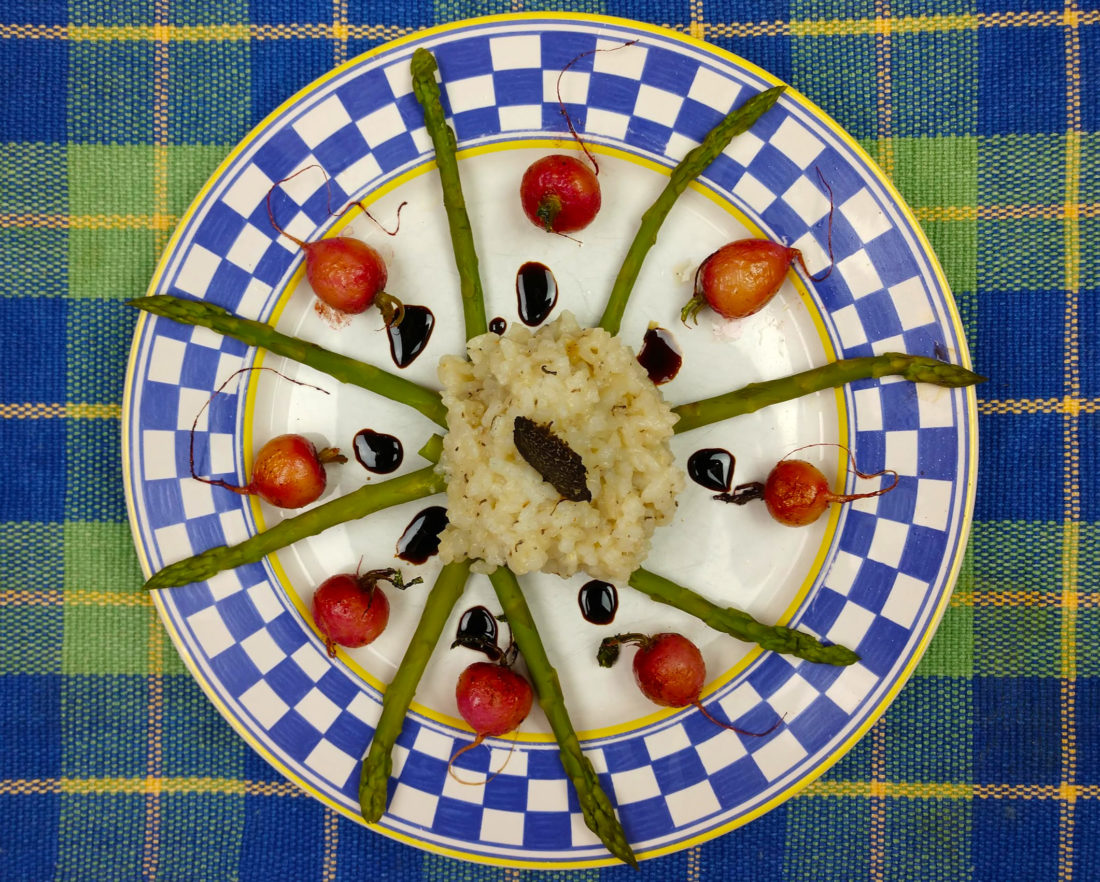The word “appetite,” as defined by Webster, has a few angles: a desire for food or drink; a desire to satisfy any bodily need or craving; a desire or liking for something; fondness; taste. The Cambridge English three-prong definition is: the feeling that you want to eat food; the feeling of wanting or needing something; a desire or need for something.
So appetite, it would seem, boils down to a feeling or a desire more than a physical need. Some of the many synonyms used for appetite are: craving, longing, yearning, hankering, hunger, thirst, passion, relish, lust, love, zest, gusto, avidity, ardor and ache. Given these powerful words, which evoke a visceral reaction in most of us, we might deduce that appetite is what drives us, what keeps us going through thick and thin, what makes us rise from our beds in the morning.
This monthly column will explore the zest that fuels our hunger for food and — by extension, since food fuels not only our very cells but our minds and our spirits as well — all other aspects of our daily lives. In fine-tuning our understanding of nourishment, we can savor more, serve more, celebrate more.
Tapping into our local community, I asked a chef and three artists what the word “appetite” conjures up for them. Chef Mark Rosenstein, former owner of The Market Place restaurant, thinks of appetite as “yearning memories, promises fulfilled, the taste of lusciousness, shared company, satisfying desire.”
Jerry Read Smith, an instrument builder, recording artist and producer, looks at appetite as a refined way to view hunger. “You can satisfy hunger,” he says, “or you can consider what might satiate hunger; appetite directs the way I fulfill that hunger, be it for music, recording or instrument design.”
Painter Karen Weihs, from Cashiers via Charleston, S.C., who’s known as the “Colorist of the Carolinas,” views appetite as “how I feel about art, from a hungry artist’s standpoint, always interested in feeding the appetite well, of enjoying without overdoing. Having appetite and the good fortune to enjoy it is nurturing; it gives me a sense of home.”
Poet Keith Flynn, an author, singer and longtime editor of the Asheville Poetry Review, says: “To an artist, the idea of curbing one’s appetite is anathema to the very idea of creation. … Who would ask that Da Vinci curb his appetite for learning, as he was drawn from one idea to the next, his mind and imagination skipping from one curiosity to another, like a thrown rock barely touching the surface of a pond?”
As spring rounds the bend, let’s consider the role of the appetizer. An appetizer reels us in, sets the stage, creates a longing, leaves us wanting more. It is a teaser for the pièce de résistance. To illustrate, here is a recipe for a spring risotto, which can be prepared with or without the suggested truffle.
Look for fresh radishes and asparagus at your local market. April is the peak season for this latter ingredient, so take advantage of its ubiquitousness to garnish all the dishes you can. Choose firm spears with tight heads and bright green hues.
Chef, musician and author Susi Gott Séguret is founder of the Seasonal School of Culinary Arts and organizes the Asheville Truffle Experience and other events. Originally from Madison County, she lived for over 20 years in France, where she earned a diploma from the Cordon Bleu.




Before you comment
The comments section is here to provide a platform for civil dialogue on the issues we face together as a local community. Xpress is committed to offering this platform for all voices, but when the tone of the discussion gets nasty or strays off topic, we believe many people choose not to participate. Xpress editors are determined to moderate comments to ensure a constructive interchange is maintained. All comments judged not to be in keeping with the spirit of civil discourse will be removed and repeat violators will be banned. See here for our terms of service. Thank you for being part of this effort to promote respectful discussion.